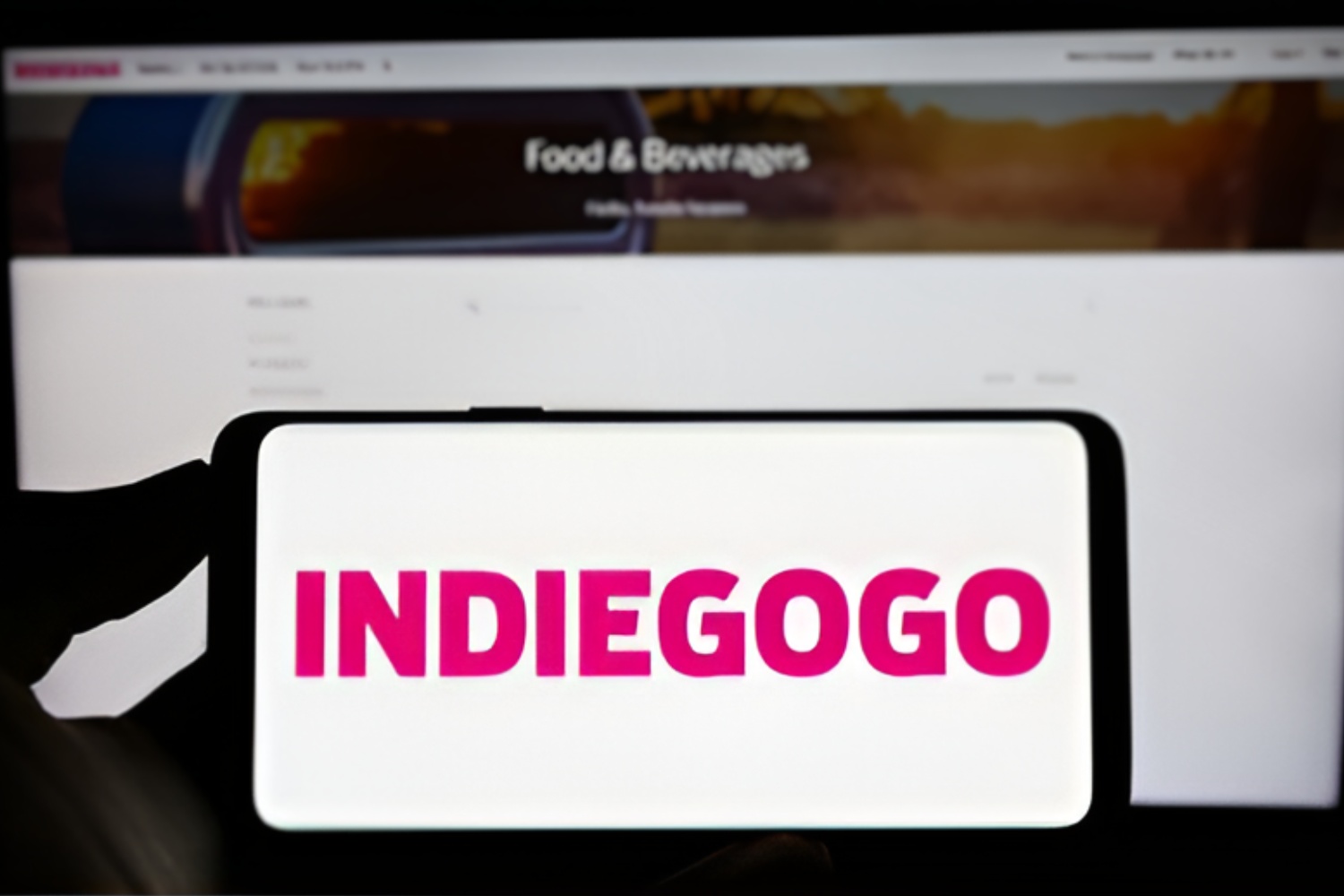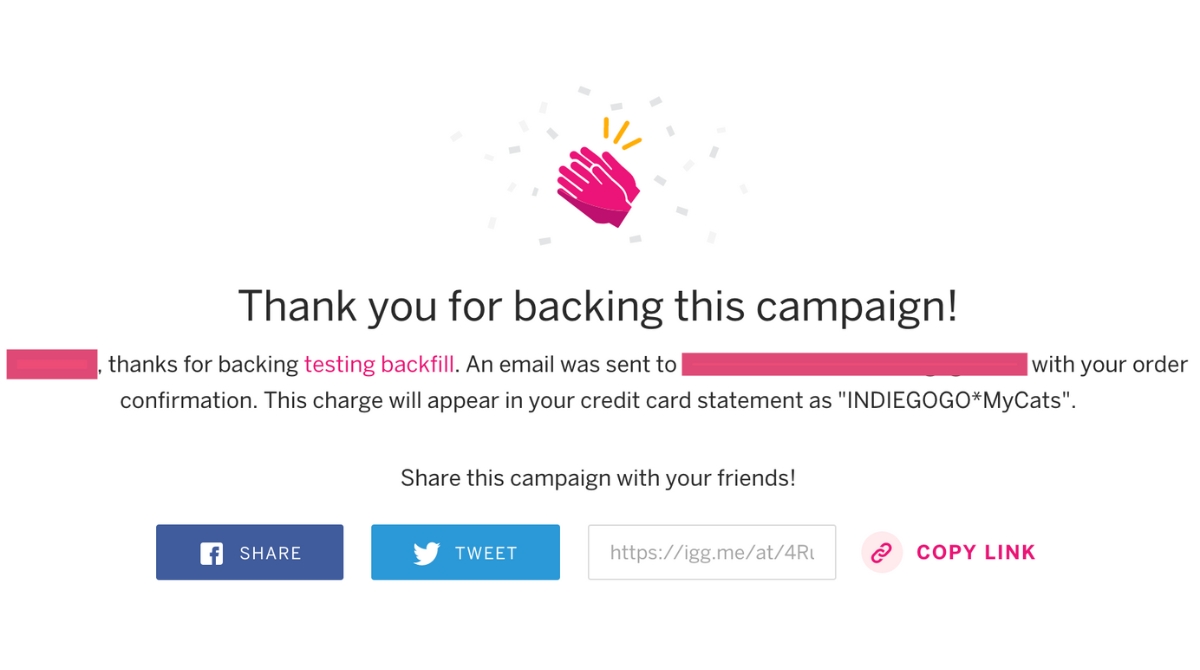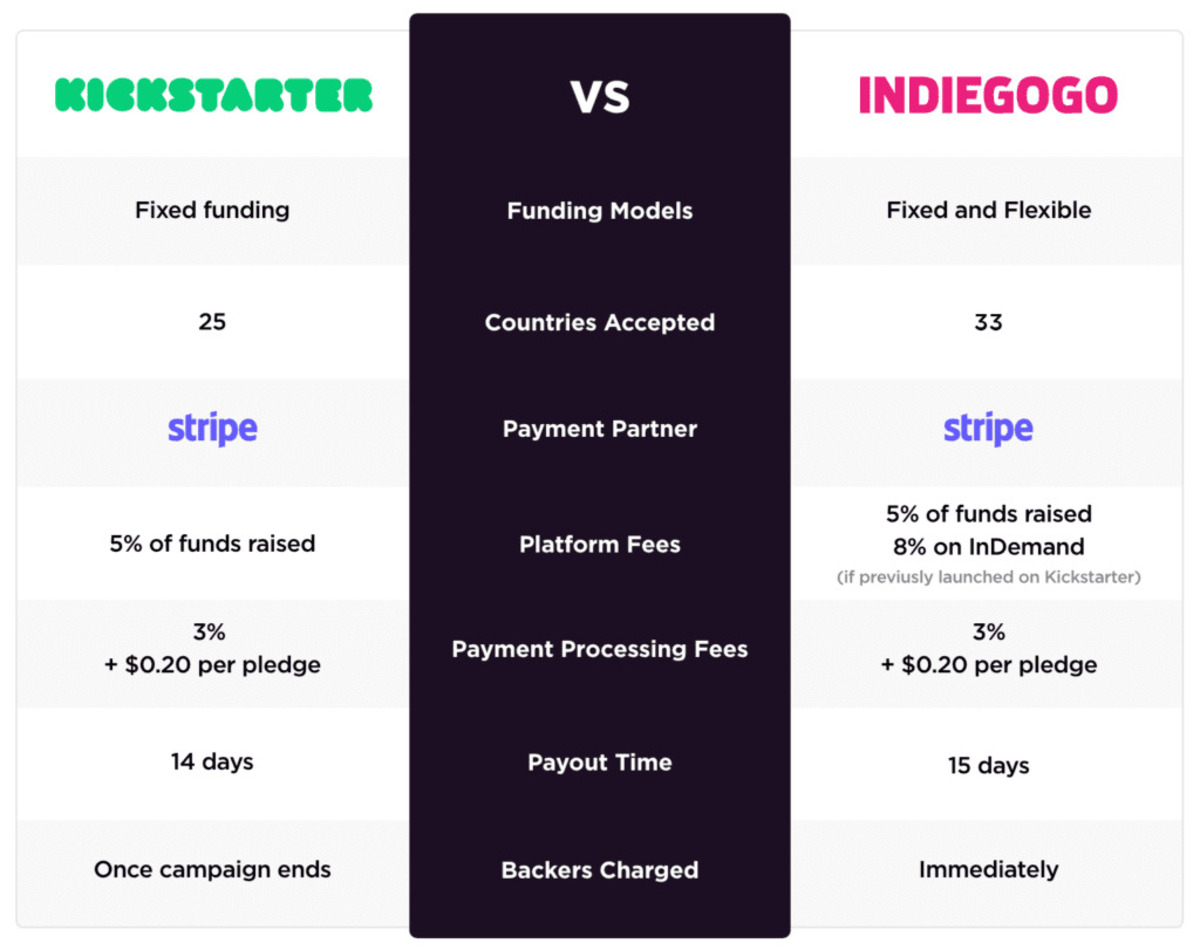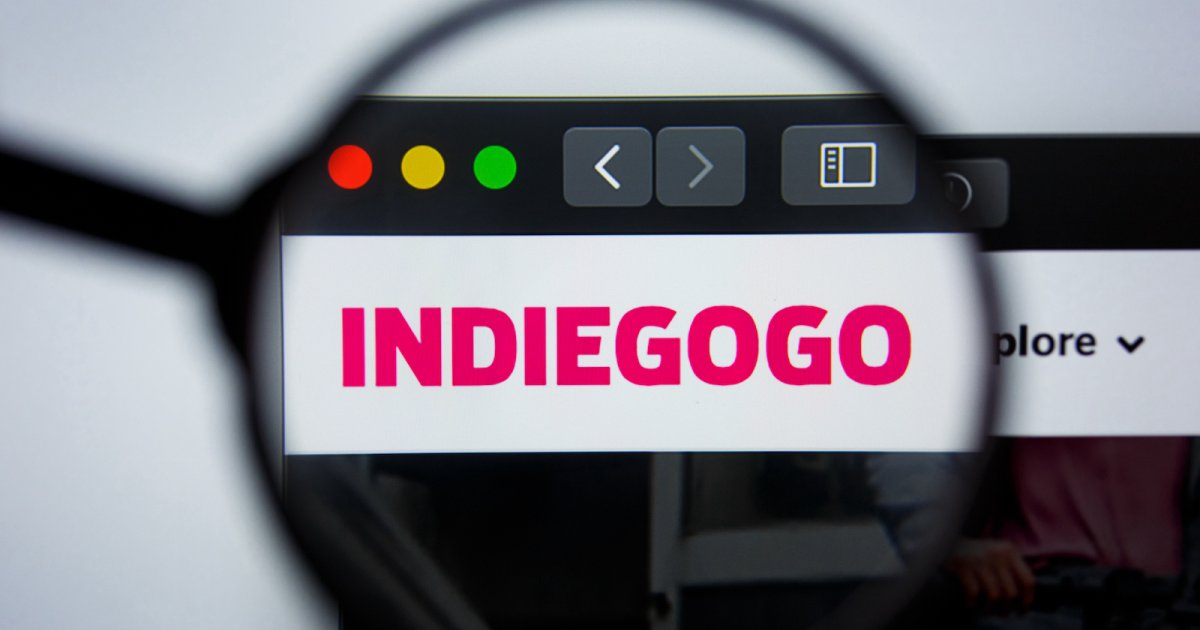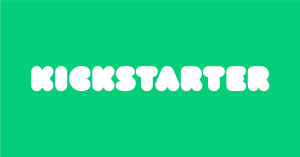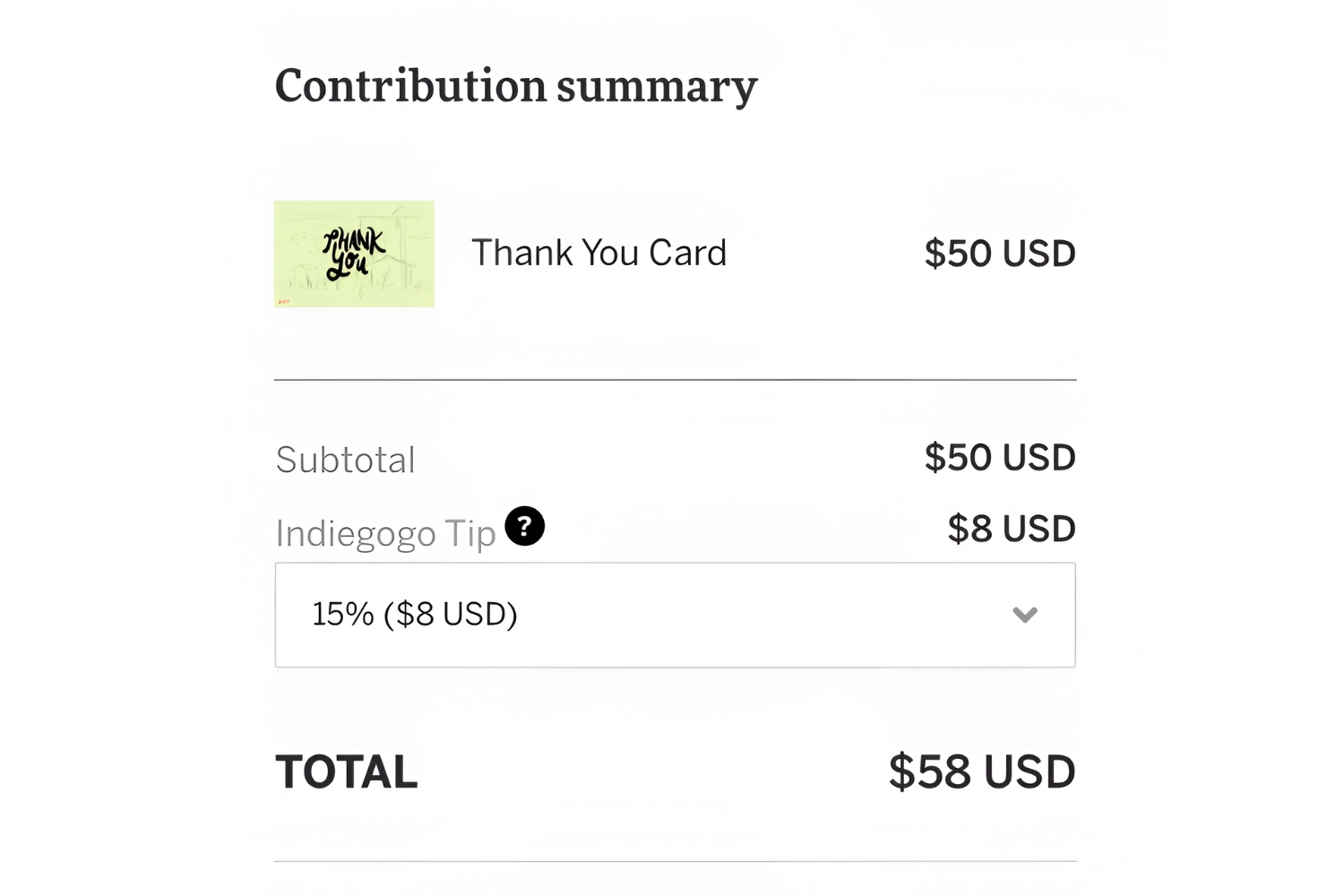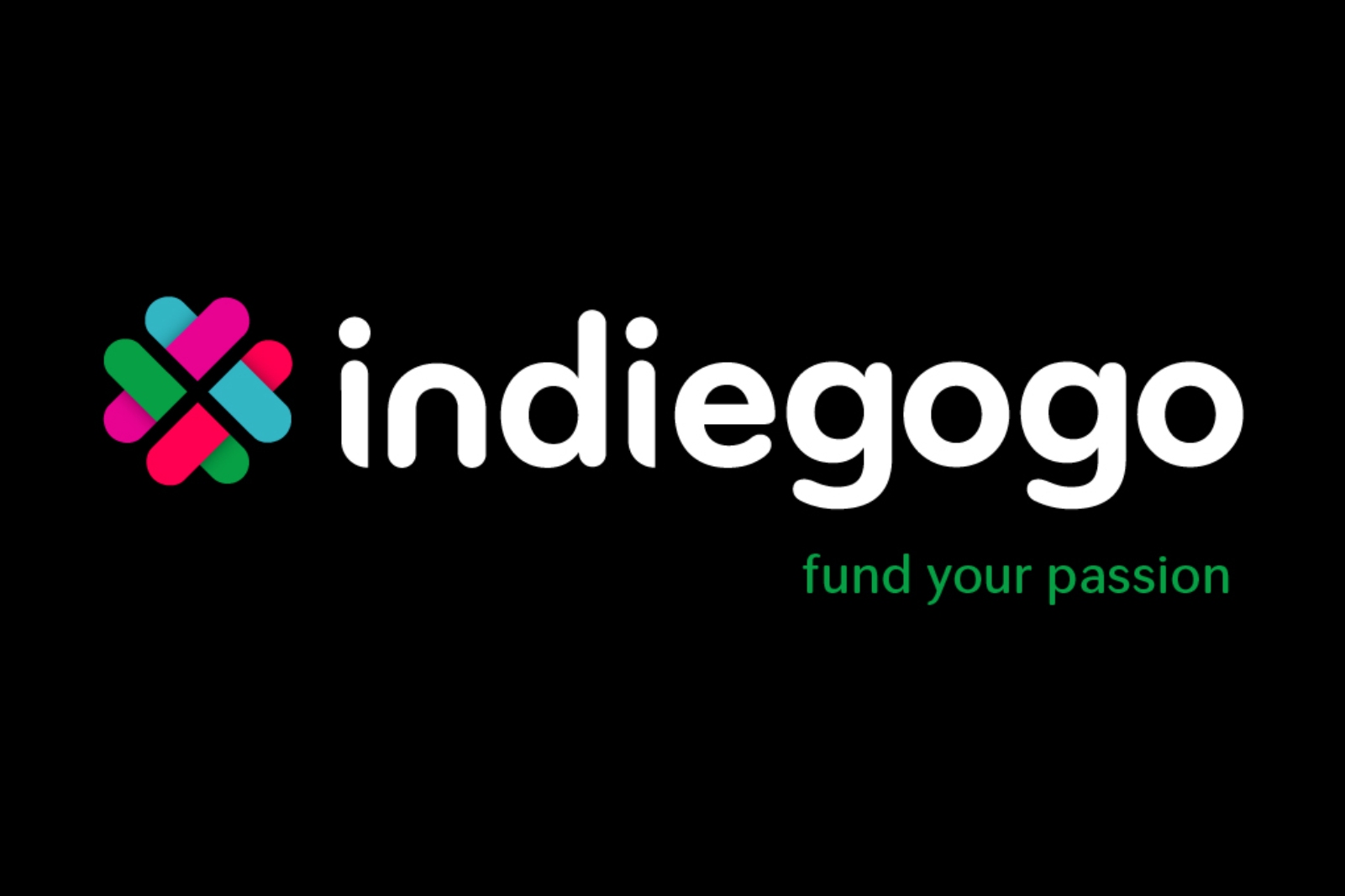Introduction
Welcome to the world of crowdfunding, where innovative ideas come to life through the support of a global community. Whether you’re a creative entrepreneur looking to bring a new product to market or a passionate individual seeking to make a difference, platforms like Indiegogo offer a gateway to turn dreams into reality.
In the vast landscape of crowdfunding platforms, Indiegogo has emerged as a popular choice for aspiring entrepreneurs and individuals with big ideas. But before diving into the exciting realm of crowdfunding, it’s important to understand the financial aspects, including the fees that Indiegogo charges both campaign creators and contributors.
In this article, we will explore the fees associated with launching a campaign on Indiegogo, as well as the fees that contributors may encounter when supporting a project. By understanding the cost structure, you can make informed decisions and effectively plan your crowdfunding journey.
So, whether you’re a campaign creator seeking insights into Indiegogo’s fees or a potential supporter curious about the financial implications of contributing, keep reading to learn all about the charges associated with Indiegogo.
Next, we’ll dive into the fees that campaign creators are subject to when launching a project on Indiegogo.
Indiegogo Fees for Campaign Creators
As a campaign creator on Indiegogo, you can take advantage of their platform to bring your ideas to life. However, it’s essential to understand the fees that you’ll encounter during your crowdfunding journey.
The primary fee that Indiegogo charges campaign creators is the platform fee. This fee is calculated as a percentage of the total funds raised and helps support the maintenance and operation of the platform itself. Indiegogo’s platform fee varies depending on whether your campaign is fixed funding or flexible funding:
- For fixed funding campaigns, where fundraisers have a specific funding goal, Indiegogo charges a platform fee of 5% of the funds raised. If you do not reach your funding goal, Indiegogo will refund the contributions to your backers.
- For flexible funding campaigns, where fundraisers can keep the funds they raise regardless of whether they reach their goal, Indiegogo charges a slightly higher platform fee of 5% if the campaign reaches its goal, or 7% if it does not.
It’s important to note that the platform fee is based on the total funds raised during the campaign, including both contributions and any additional funds generated through add-ons or perks.
In addition to the platform fee, campaign creators should also consider the payment processing fee. This fee covers the cost associated with processing the financial transactions on the platform. Indiegogo uses third-party payment processors, such as Stripe and PayPal, who charge a processing fee for each transaction. The payment processing fee varies depending on the location and currency of the campaign, but it typically ranges from 2.9% to 3.5% of the transaction amount, plus a small fixed fee per transaction.
It’s worth noting that Indiegogo offers several optional services to enhance your campaign’s visibility and success, but these services come with additional fees. These services include featured placement on the Indiegogo website, marketing assistance, and access to Indiegogo’s network of experts. The fees for these optional services vary and can be found on Indiegogo’s website.
Understanding and budgeting for these fees will help you plan your campaign effectively and ensure that you make the most of your crowdfunding experience on Indiegogo.
Now that we’ve covered the fees for campaign creators, let’s explore the fees that contributors may encounter when supporting a project on Indiegogo.
Platform Fee
One of the main fees that Indiegogo charges campaign creators is the platform fee. This fee serves as a contribution towards the maintenance and operation of Indiegogo’s crowdfunding platform.
The platform fee is based on a percentage of the total funds raised during the campaign and varies depending on the type of funding model used: fixed funding or flexible funding.
For fixed funding campaigns, where fundraisers have a specific funding goal that must be reached in order to receive the funds, Indiegogo charges a platform fee of 5% of the total funds raised. This means that if your campaign reaches its goal of, let’s say, $10,000, Indiegogo will deduct a platform fee of $500.
On the other hand, for flexible funding campaigns, where fundraisers can keep the funds raised regardless of whether they meet their goal, Indiegogo charges a slightly higher platform fee. If the campaign reaches its goal, the platform fee remains at 5%. However, if the campaign falls short of its goal, the platform fee increases to 7%. For example, if your flexible funding campaign raises $10,000, the platform fee will be $500. But if your campaign falls short and only raises $8,000, Indiegogo will deduct a platform fee of $560.
It’s important to note that the platform fee is applied to the total funds raised during the campaign, including any additional funds generated through add-ons or perks. This fee covers the cost of maintaining and improving the Indiegogo platform, allowing it to continue providing a valuable crowdfunding service to campaign creators.
By understanding the platform fee structure, campaign creators can accurately calculate their costs and plan their crowdfunding campaigns accordingly. It is important to factor this fee into your funding goal and ensure that you have enough funds to cover the platform fee along with other expenses associated with your campaign.
Now that we have covered the platform fee, let’s move on to the next section, which discusses the payment processing fees campaign creators may encounter on Indiegogo.
Payment Processing Fee
In addition to the platform fee, campaign creators on Indiegogo are also responsible for paying a payment processing fee. This fee covers the cost of processing the financial transactions that occur on the platform.
Indiegogo utilizes third-party payment processors, such as Stripe and PayPal, to handle the collection and transfer of funds during a crowdfunding campaign. These payment processors charge a fee for their services, which is typically a percentage of the transaction amount, along with a small fixed fee per transaction.
The payment processing fee varies depending on factors such as the location of the campaign and the currency used. Generally, the fee ranges from 2.9% to 3.5% of the transaction amount, plus a small fixed fee per transaction.
For example, let’s say you receive a contribution of $100 through Indiegogo. If the payment processing fee is 3% plus a fixed fee of $0.30 per transaction, the fees for this particular contribution would be $3.30. This means that after deducting the payment processing fee, you would receive $96.70.
It’s important to consider the payment processing fee when calculating your expected funds and setting your funding goal. Additionally, it’s worth noting that while Indiegogo selects the payment processor for your campaign, you may have the option to choose between different payment processors on certain occasions.
Understanding and budgeting for the payment processing fee is crucial for campaign creators to ensure that they accurately forecast their expenses and manage their finances effectively during the crowdfunding campaign.
Now that we’ve covered the payment processing fee for campaign creators, let’s move on to the optional fees that creators may encounter on Indiegogo.
Optional Fees
In addition to the platform fee and payment processing fee, Indiegogo offers optional services and features that can enhance a campaign’s visibility and success. These optional services come with additional fees, but they can provide valuable support for campaign creators looking to maximize their fundraising efforts.
One of the optional services offered by Indiegogo is the opportunity for campaign creators to secure featured placement on the Indiegogo website. This means that a campaign can be highlighted in a prominent position on the platform, increasing its exposure to potential contributors. The fees for featured placement vary depending on the duration and location of the placement, and these details can be found on Indiegogo’s website.
Indiegogo also provides marketing assistance services to help campaign creators reach a larger audience. These services include customized marketing strategies, social media promotion, and access to Indiegogo’s network of experts. The fees for these marketing services vary depending on the level of support required and can be discussed with the Indiegogo team directly.
Additionally, campaign creators have the option to utilize Indiegogo’s InDemand feature, which allows them to continue accepting contributions even after the campaign has ended. This feature is particularly useful for successful campaigns that want to keep collecting pre-orders or ongoing support. The fees for InDemand are based on a percentage of the total funds raised during the campaign and are separate from the platform fee and payment processing fee.
It’s important for campaign creators to carefully evaluate the potential benefits and costs of these optional services. While they can enhance a campaign’s visibility and attract more contributors, it’s crucial to consider their impact on the overall budget and fundraising goals.
By utilizing optional services strategically, campaign creators can make the most of Indiegogo’s resources and optimize their chances of successfully reaching their funding goals.
Now that we’ve covered the optional fees, let’s move on to discussing refunds and chargebacks on Indiegogo.
Refunds and Chargebacks
When it comes to crowdfunding campaigns, there may be instances where a contributor requests a refund or initiates a chargeback. Understanding how Indiegogo handles these situations is important for both campaign creators and contributors.
If a campaign creator is unable to fulfill their promises or deliver the product or service as described, contributors may wish to request a refund. In this case, it is the responsibility of the campaign creator to provide refunds directly to the contributors. Indiegogo does not facilitate the refund process, as the funds are transferred directly to the campaign creator during the campaign.
If a contributor believes that a charge on their credit card was unauthorized or fraudulent, they may initiate a chargeback. A chargeback is a dispute process initiated through the contributor’s credit card company or bank. If a chargeback is successful, the funds will be refunded back to the contributor by their financial institution, and the campaign creator may be liable for any chargeback fees incurred.
It’s important for both campaign creators and contributors to communicate and resolve any issues regarding refunds or chargebacks directly. Indiegogo acts as a platform and does not mediate disputes or facilitate refunds or chargeback processes.
For contributors, it’s crucial to carefully consider their pledge and the level of risk involved before supporting a campaign. Reading through the campaign details, checking the creator’s reputation, and conducting due diligence can help minimize the chances of encountering issues or needing a refund.
Campaign creators, on the other hand, should strive to fulfill their promises and deliver a quality product or service to their contributors. Maintaining clear and transparent communication throughout the campaign and promptly addressing any concerns can help mitigate refund and chargeback-related issues.
By understanding the refund and chargeback processes, both campaign creators and contributors can navigate the potential challenges of crowdfunding with greater confidence and clarity.
Now that we’ve covered refunds and chargebacks, let’s move on to discussing the fees that contributors may encounter when supporting a project on Indiegogo.
Indiegogo Fees for Contributors
As a contributor on Indiegogo, you have the opportunity to support projects that align with your interests and values. While contributing to a campaign can be a rewarding experience, it’s important to understand the fees that you may encounter along the way.
When you pledge your support to a campaign on Indiegogo, you are generally not directly charged any fees by the platform itself. However, it’s important to consider the following factors that may impact your contribution:
Firstly, payment processing fees. Indiegogo utilizes third-party payment processors, such as Stripe and PayPal, to handle the financial transactions. These payment processors charge a fee for their services, which is typically a percentage of the transaction amount, along with a small fixed fee per transaction. The payment processing fee is deducted from the contribution you make and is typically reflected in your final payment.
The payment processing fee varies depending on factors such as the location of the campaign and the currency used. It usually ranges from 2.9% to 3.5% of the transaction amount, plus a small fixed fee per transaction. Keep in mind that this fee is separate from any fees that the campaign creator may incur on their end.
Secondly, there might be additional shipping or customs fees associated with specific perks or rewards offered by the campaign. These fees are determined by the campaign creator and are typically communicated in the campaign details. It’s important to take note of any potential additional costs associated with the rewards you select, especially if they require international shipping or customs clearance.
Lastly, it’s worth considering any applicable taxes that may be added to your contribution depending on your location and the campaign’s jurisdiction. Indiegogo does not collect or remit taxes on behalf of contributors or campaign creators. It is the responsibility of the campaign creator to comply with any relevant tax regulations.
By being aware of these potential fees and taking them into account, you can make more informed decisions when contributing to campaigns on Indiegogo. Understanding the payment processing fees, any additional shipping or customs fees, and the potential for applicable taxes will help you accurately budget your contributions.
Now that we have covered the fees for both campaign creators and contributors on Indiegogo, let’s conclude our exploration of Indiegogo’s fee structure.
Platform Fee
One of the fees that contributors may encounter when supporting a project on Indiegogo is the platform fee. The platform fee is a charge imposed by Indiegogo to cover the costs of operating and maintaining their crowdfunding platform.
As a contributor, the platform fee is typically not directly applied to your contribution. Instead, it is an expense that the campaign creator must consider when calculating their funding goals and setting the price for perks or rewards.
Indiegogo’s platform fee varies depending on the type of funding model used by the campaign creator. For fixed funding campaigns, where the campaign creator has a specific funding goal, Indiegogo charges a platform fee of 5% of the total funds raised if the campaign reaches its goal. In the event that the campaign does not reach its goal, the platform fee remains the same at 5%.
For flexible funding campaigns, where the campaign creator can keep the funds raised regardless of whether they meet their goal, the platform fee will be 5% if the campaign reaches its funding goal. However, if the campaign falls short of its goal, the platform fee increases to 7%. It’s important to note that the platform fee is calculated based on the total funds raised, including any additional funds generated through add-ons or perks.
In summary, the platform fee is a cost that campaign creators must consider when planning their crowdfunding campaigns. As a contributor, this fee is indirectly accounted for by the campaign creator when setting the funding goal and pricing the perks or rewards. By understanding the platform fee structure, you can have a clearer understanding of how your contribution supports the campaign creator and helps cover the expenses associated with utilizing the Indiegogo platform.
Now that we have covered the platform fee, we have explored the various fees associated with participating in a crowdfunding campaign on Indiegogo. Understanding these fees can help campaign creators plan their campaigns effectively and allow contributors to make informed decisions when supporting projects. If you have any additional questions, be sure to refer to Indiegogo’s website for the most up-to-date information.
Payment Processing Fee
When contributing to a project on Indiegogo, contributors may encounter a payment processing fee. This fee covers the cost of processing the financial transactions on the Indiegogo platform and is applied to ensure secure and seamless payment processing.
Indiegogo utilizes third-party payment processors, such as Stripe and PayPal, to handle the collection and transfer of funds during a crowdfunding campaign. These payment processors charge a fee for their services, which is typically a percentage of the transaction amount, along with a small fixed fee per transaction.
The payment processing fee varies depending on factors such as the location of the campaign and the currency used. Generally, the fee ranges from 2.9% to 3.5% of the transaction amount, plus a small fixed fee per transaction.
For example, if you contribute $100 to a campaign, the payment processing fee might be 3% of the transaction amount plus a fixed fee of $0.30. In this case, the payment processing fee would be $3.30, resulting in a total contribution of $96.70.
It’s important to consider the payment processing fee when calculating your budget and determining the amount you wish to contribute. By factoring in the payment processing fee, you can ensure that your contribution accurately reflects the intended support for the project.
Additionally, it’s worth noting that Indiegogo selects the payment processor for each campaign, and contributors do not have control over choosing a different payment processor for their contribution.
Understanding the payment processing fee ensures transparency in the contribution process and allows both contributors and campaign creators to make informed decisions. By taking into account the payment processing fee, you can maximize the impact of your contribution and support the campaigns you believe in.
Now that we have covered the payment processing fee, let’s move on to the optional fees that campaign creators may encounter on Indiegogo.
Conclusion
Indiegogo provides a platform for creative individuals, entrepreneurs, and passionate individuals to bring their ideas to life through the support of a global community. However, it’s important to understand the fees associated with running and supporting campaigns on Indiegogo.
For campaign creators, the primary fees include the platform fee and the payment processing fee. The platform fee is a percentage of the funds raised and varies based on the type of funding model used. While the payment processing fee covers the cost of processing financial transactions and is typically a percentage of the transaction amount, along with a small fixed fee per transaction.
Additionally, campaign creators have the option to utilize optional services offered by Indiegogo, such as featured placement and marketing assistance, which come with their own fees. These optional services can enhance a campaign’s visibility and success, but it’s important to carefully evaluate their benefits and costs.
Contributors, on the other hand, may encounter a payment processing fee when making their contributions. This fee covers the cost of secure payment processing and is typically a percentage of the transaction amount, along with a small fixed fee per transaction.
By understanding the fee structure of Indiegogo and considering the associated costs, both campaign creators and contributors can make informed decisions and effectively plan their crowdfunding journeys.
It’s important to note that the fees can vary and may be subject to change, so it’s always recommended to refer to Indiegogo’s official website for the most up-to-date information.
Now armed with knowledge about the fees associated with Indiegogo campaigns, you can navigate the crowdfunding landscape with confidence, whether you’re a campaign creator bringing your dream project to life or a passionate supporter contributing to projects that resonate with you.







